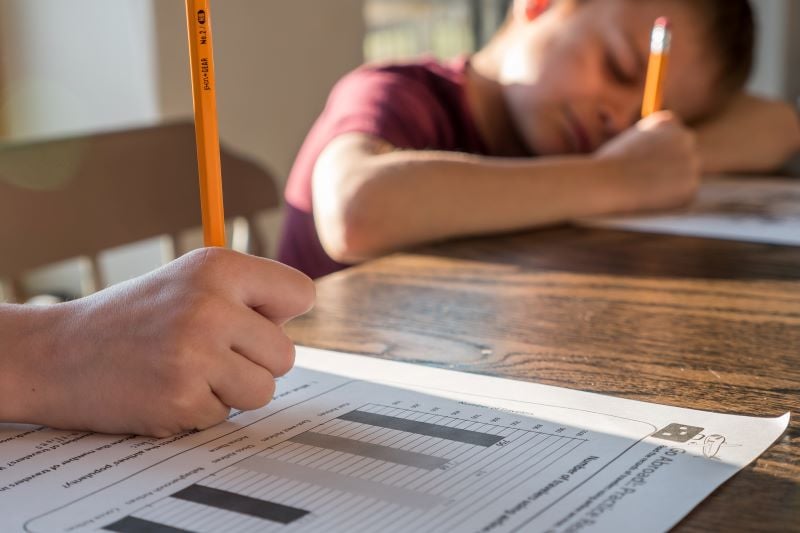 Should emotional and mental wellbeing have a place in the school system? Studies suggest that it should. According to Green and colleagues (2010) common childhood stressors that often begin to manifest in early education, lead to adverse mental health outcomes that can negatively impact academic achievement. Without intervention, these stressors can act as a foundation for problems that are likely to continue into adulthood. Although there have been legislative provisions that focus specifically on more dangerous behaviors such as the Gun-Free School Act, the Pro-Children Act, and the Safe and Drug Free Schools and Communities Act, efforts to improve emotional and mental well-being have received much less attention (Jones, Fisher, Green & Pritzl, 2007).
Should emotional and mental wellbeing have a place in the school system? Studies suggest that it should. According to Green and colleagues (2010) common childhood stressors that often begin to manifest in early education, lead to adverse mental health outcomes that can negatively impact academic achievement. Without intervention, these stressors can act as a foundation for problems that are likely to continue into adulthood. Although there have been legislative provisions that focus specifically on more dangerous behaviors such as the Gun-Free School Act, the Pro-Children Act, and the Safe and Drug Free Schools and Communities Act, efforts to improve emotional and mental well-being have received much less attention (Jones, Fisher, Green & Pritzl, 2007).
A recent study found that only 53% of schools have full-time access to mental health professionals. Of those professionals, 76% reported spending less than half their work week on working with students with mental health problems (Romer & McIntosh, 2005). The reality is that children throughout the United States are experiencing problems with mental health. These problems can be a result of genetics, the environment, or a combination of both. And whether we want to acknowledge it or not, mental health and academics share a reciprocal relationship. Positive mental health is nearly impossible without education and proper education is made much more difficult without positive mental health.
So how can we be more preventative? What can we do to better integrate mental health into education? It begins with us. For those of us with children, we must ask ourselves whether we’ve been neglecting our own, personal wellbeing. We should also consider the idea that we may have negative attitudes that contribute to the stigma that surrounds mental health. Once we become more comfortable with the idea that mental health and emotional wellbeing is a priority, it will be much easier to see it being fully integrated into schools. We should also ask our children questions, ensure that we provide them with the attention and care that they need, and when we notice signs of impaired mental health (whether it be our own or our children’s) we should make it a priority to seek help. This can be a visit to the primary care physician, it may be seeking a therapist, or simply getting a massage.
Also, we should all go to town-hall meetings, parent teacher conferences, and school meetings. Ask your child’s school whether they have a licensed child psychologist on school premises, and if not, how they handle mental health and crisis situations. Look into the school legislation being passed in your area. Asking, questions and showing concern is a great start. Important legislation such as the Johhny Gosch Bill and our National Amber Alert system all began as a result of parents speaking on behalf of their children.
For educators, research is literally a click away. Explore common ways to integrate mental health into your school day. Learn the common signs of ailments such as depression and anxiety and ensure that you act as allies to your students. Also, address your own personal biases with mental health, and the things that lead to it (e.g. poverty, abuse, violence) and advocate for all your students. Again, the changes that need to take place in education will always begin with us, the lay people who take the time to act.
References:
Atkins, M. S., Hoagwood, K. E., Kutash, K., & Seidman, E. (2010). Toward the integration of education and mental health in schools. Administration and Policy in Mental Health and Mental Health Services Research, 37(1-2), 40-47.
Green, J. G., McLaughlin, K. A., Berglund, P. A., Gruber, M. J., Sampson, N. A., Zaslavsky, A. M., & Kessler, R. C. (2010). Childhood adversities and adult psychiatric disorders in the national comorbidity survey replication I: associations with first onset of DSM-IV disorders. Archives of general psychiatry, 67(2), 113-123.
Jones, S. E., Fisher, C. J., Greene, B. Z., Hertz, M. F., & Pritzl, J. (2007). Healthy and safe school environment, part I: results from the School Health Policies and Programs Study 2006. Journal of School Health, 77(8), 522-543.
Romer, D., & McIntosh, M. (2005). The Roles and Perspectives of School Mental Health Professionals in Promoting Adolescent Mental Health.





